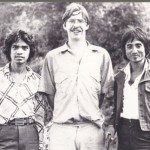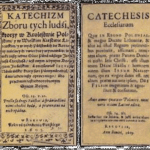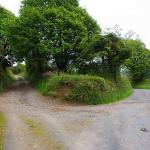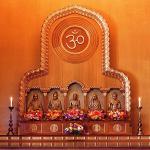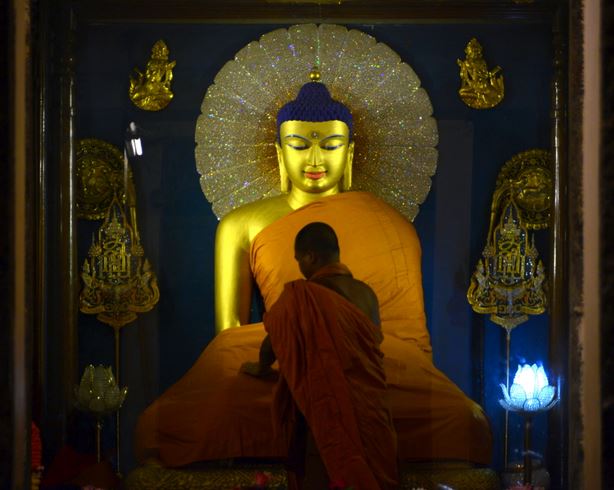
I have long believed that positions, religious or otherwise, can be strengthened or (wisely) abandoned when met with careful argumentation. Do your claims to “X” hold up? If not, why not let them go?
So I was pleased to read a post today on the Atheist Channel here at Patheos asking “Was the Buddha enlightened?”
There, Eric Sotnak presents a well-reasoned case against the Buddha’s enlightenment (or awakening) based on the doctrine’s connection to rebirth and the lack of evidence for rebirth. As he lays out: No rebirth, no enlightenment:
1. If the Buddha was enlightened, then he was liberated from karmic rebirth.
2. If anyone is liberated from karmic rebirth, then karmic rebirth is real.
3. Karmic rebirth is not real.
4. Therefore, the Buddha was not enlightened.
The key, Eric rightly points out, is the third premise. Based on modus tollens, if we can deny the consequent of premise two (as is done in premise three) then we can deny the antecedent: that someone (the Buddha) is liberated from karmic rebirth.
Again rightly stated by Eric:
In the context within which Buddhism developed, acceptance of karmic rebirth was so widespread that there was no real need for Buddhists to defend extensively a belief in its reality. Their starting point was, effectively, “Given that we all know karmic rebirth is real, and that escaping it is the supreme goal of religious practice, here’s the solution the Buddha has found…” Early Buddhism simply takes the reality of karmic rebirth as not standing in need of positive evidence. But in the absence of both compelling evidence for its reality and in the absence of an account of the means by which it is alleged to occur, we have good reason to accept premise 3 of the above argument.
Without convincing evidence of rebirth (Eric notes Ian Stevenson’s work in this area), we cannot accept a kind of awakening (my preferred term) from the rounds of rebirth.
The most common response I have seen from Buddhists today is a kind of agnosticism with regards to such questions: rebirth is outside our experience and the Buddha did not demand blind faith in such things. But it is still possibly out there and with reach to those who put in the time.
Another approach would be to say that rebirth is see-able (as the Buddha and later Buddhists claimed) but this requires one to do the work in meditation, etc, to reach a state of mental purity wherein even such a concept would make sense. This is different from the agnostic stance because it begins with an affirmation rather than a claim of not-knowing.
Either approach might be likened to our scientific understanding of the atom and the use of a model depicting a blob in the middle with swirling blobs in circular orbits around it:
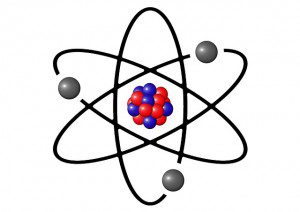
That’s the Rutherford Model. But then we got Schrodinger’s “Electron Cloud” model (1926) which recognized that electrons could be observed as either particles or waves and with that things get weird enough to be well beyond my college “philosophy of science” class memory and my desire to google videos on “What does an atom REALLY look like?”
In any case, we use this (incorrect) model as a means to get simpletons (like me) interested in looking deeper (we hope), or at least accepting that there are things knowable out there – to those who try – that we do not fully understand. An agnostic might say that we don’t know what an atom really looks like, but we all can understand it with the proper time and effort. The second defender of atomic theory would say that we do know what atoms look like, it just takes a step or two to get people to get it.
The problem with this, or any analogy with science for claims about rebirth, is that rebirth claims are not testable. There are no experiments we can use to test it and no awakened being has stepped forward in the age of science and volunteered to, upon death, reincarnate and as quickly as possible make his (or her) way to a lab to describe the whole process to awaiting scientists. The hallmark of scientific theory, such as that of the atom, is that experiments can be replicated again and again. And to my knowledge that is exactly what scientists have been doing for the last 90+ years, digging deeper and deeper into the nature of reality on the very small scale.
A third approach is that of redefining awakening so that rebirth is not necessary, essentially naturalizing it to mean a sort of complete acceptance of impermanence and abandonment of psychological agony with regard to life’s inescapable sufferings. Here, no rebirth is needed; the stories of past Buddhas and past lives of others are all just fodder to encourage helpless beings to get on the path, to do the work, to work toward their own awakening. Yes, telling them that it may take many lifetimes to attain it is technically false in this line of reasoning, but it may be a necessary expedient – a “skill in means” to get them moving toward the goal.
I don’t see any reasonable fourth way forward for Buddhists. Do you?


